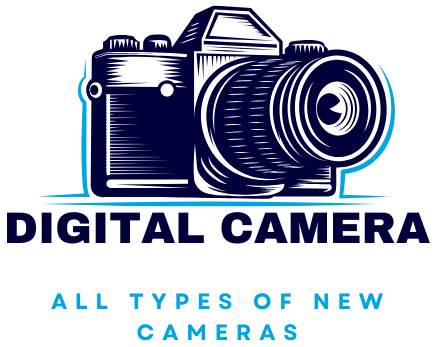Why do photographers prefer full-frame cameras for studio shoots
| We have chosen the BEST photography digital camera with bargain price Now just for you ! Click HERE to check our different photography digital camera for your need. Team chose the BEST Digital Camera |
Why Do photographers Prefer Full-Frame Cameras for studio Shoots
In the world of photography, particularly in studio settings, the choice of equipment can make or break a session. Full-frame cameras have become a preferred option among professional photographers. This guide delves into the reasons behind this preference, exploring the benefits, practical tips, and firsthand experiences that affirm the dominance of full-frame cameras in studio shoots.
Understanding Full-Frame Cameras
Before we delve into the reasons why photographers favor full-frame cameras, it’s essential to understand what a full-frame camera is. A full-frame camera features a sensor that is equivalent in size to a 35mm film frame—measuring 36mm x 24mm. This sensor size offers several advantages over cameras with smaller sensors, such as APS-C or Micro Four Thirds.
Key Benefits of Using Full-Frame Cameras in Studio Settings
Here are some compelling reasons why full-frame cameras are favored for studio photography:
- Superior Image Quality: Full-frame cameras typically provide a higher resolution, which translates to more detail and better overall image quality. This is especially important in studio work, where large prints of the final images are common.
- Better Low-Light Performance: the larger sensor size allows for better light capture and reduced noise at higher ISO settings, making it easier to shoot in various lighting conditions.
- Wider Field of View: The larger sensor allows for a wider perspective, making it beneficial for capturing expansive scenes and getting creative with compositions.
- Better Depth of Field Control: Full-frame cameras provide greater adaptability in controlling depth of field, which is vital for isolating subjects from backgrounds in portrait photography.
- Enhanced Dynamic Range: A higher dynamic range means more detail in both shadows and highlights,crucial for studio photography where lighting can vary greatly.
Practical Tips for Using Full-Frame Cameras in the Studio
To maximize your full-frame camera’s capabilities in a studio setting, consider the following practical tips:
- Invest in Quality Lenses: A full-frame camera deserves high-quality lenses. Prime lenses with fast apertures will substantially enhance your creative possibilities.
- Use a Tripod: Stability is key in studio photography. Using a tripod with your full-frame camera will ensure sharp images, especially in low-light conditions.
- Experiment with Lighting: Utilize studio strobes and continuous lights effectively. Full-frame cameras will shine with quality lighting that showcases their dynamic range.
- post-Processing: Take advantage of the high-resolution files. Use software like Adobe Lightroom or Photoshop to enhance your images while retaining detail.
Case Studies: Successful Studio Shoots with Full-Frame Cameras
Many professional photographers can attest to the advantages of full-frame cameras. Here are two case studies illustrating their successes:
case Study 1: Portrait Photographers
A leading portrait photographer switched from an APS-C sensor to a full-frame Canon 5D Mark IV. The results were astounding. They reported:
- Significantly sharper images, especially in prints.
- Greater control over depth of field helped in isolating subjects beautifully.
- Enhanced performance in low-light environments allowed for less intrusive setups.
Case Study 2: Product Photography
A product photographer using the Nikon D850 experienced a leap in image quality. Their feedback highlighted:
- Incredibly rich colors and detail retention across various lighting conditions.
- The ability to capture high-resolution images that could be cropped without losing quality.
- Increased final output sizes for client demands without sacrificing detail.
first-hand Experience: An Enthusiast’s Transition to Full-Frame
As a photography enthusiast, I began my journey with a crop sensor camera. While I enjoyed capturing moments, I felt limited by my equipment. Upon upgrading to a full-frame Nikon Z6, the transformation was remarkable. The clarity and detail in each shot were breathtaking, and I found myself experimenting more with various lighting techniques. the dynamic range was a game-changer for post-processing,as the images retained richness and depth that were previously unattainable.
Comparative Analysis: Full-Frame vs. Crop Sensor
| Feature | full-Frame Cameras | Crop Sensor Cameras |
|---|---|---|
| Sensor size | 36mm x 24mm | 22.5mm x 15mm (average) |
| Low-Light Performance | Superior | Good |
| Depth of Field Control | Excellent | Limited |
| Dynamic Range | Higher | Moderate |
| Price range | Higher | Lower |
Conclusion: The Case for Full-Frame Cameras in Studio Photography
full-frame cameras are a favorite among photographers for studio shoots due to their superior image quality, enhanced low-light performance, greater control over depth of field, and improved dynamic range. Whether you’re a seasoned professional or an aspiring photographer,investing in a full-frame camera can elevate your work significantly.By combining the right equipment,techniques,and creative vision,you can produce stunning images that truly stand out. The choice is clear – a full-frame camera is not just an upgrade; it’s a pathway to unlocking your full photographic potential.
| We have chosen the BEST photography digital camera with bargain price Now just for you ! Click HERE to check our different photography digital camera for your need. Team chose the BEST Digital Camera |
